It was a single photograph that drew me in, a happy image of youthful promise horribly at odds with the news story it was used to illustrate.
Four smiling university students, three girls and one boy – two aged 20 and two 21 – posing outside the house they shared in the US town of Moscow, Idaho. One of the girls – blonde, laughing – is on the shoulders of another, and the young man has his arm around the third, his girlfriend.
They look so carefree, so attractive. So very normal. And yet within hours of the picture being taken, all four – Ethan Chapin, Xana Kernodle, Kaylee Goncalves and Maddie Mogen – would be dead. Murdered with a knife by an assailant who entered that university house in the small hours of November 13, 2022, seemingly with the express intention of killing them.
On Monday this week those of us who have been closely following this terrible case were astonished to hear that the man set to go on trial for the murders next month – 30-year-old Bryan Kohberger – has now decided to plead guilty. It was a totally unexpected move, following years of legal wrangling by his defence and never any indication he would do anything but insist on his innocence.
And it has infuriated at least one of the victims’ families – that of Kaylee Goncalves – who called it a ‘secretive deal’ that seeks to rule out the death penalty they had fervently wished for.
Back in November 2022, as I gazed at that picture, my twin boys, who are the same age as the victims of the Idaho murders would have been had they survived, were on their way home from university in Ohio and Massachusetts respectively.
They were spending the Thanksgiving holiday with me in New York. As our home filled with laughter and food and celebration, I felt deeply for the victims’ grieving parents. I watched the news obsessively and found I could not shake feelings of sadness and horror at what those young people had suffered.
Over the next few weeks, very few details were released. Two house-mates had survived, but no one knew why.
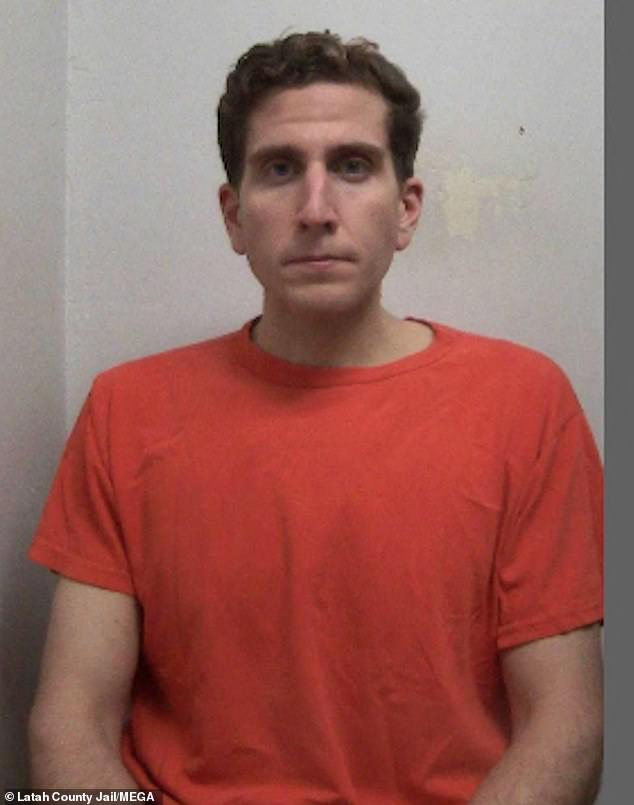
Bryan Kohberger, 30, pictured following his arrest after knifing four University of Idaho students to death
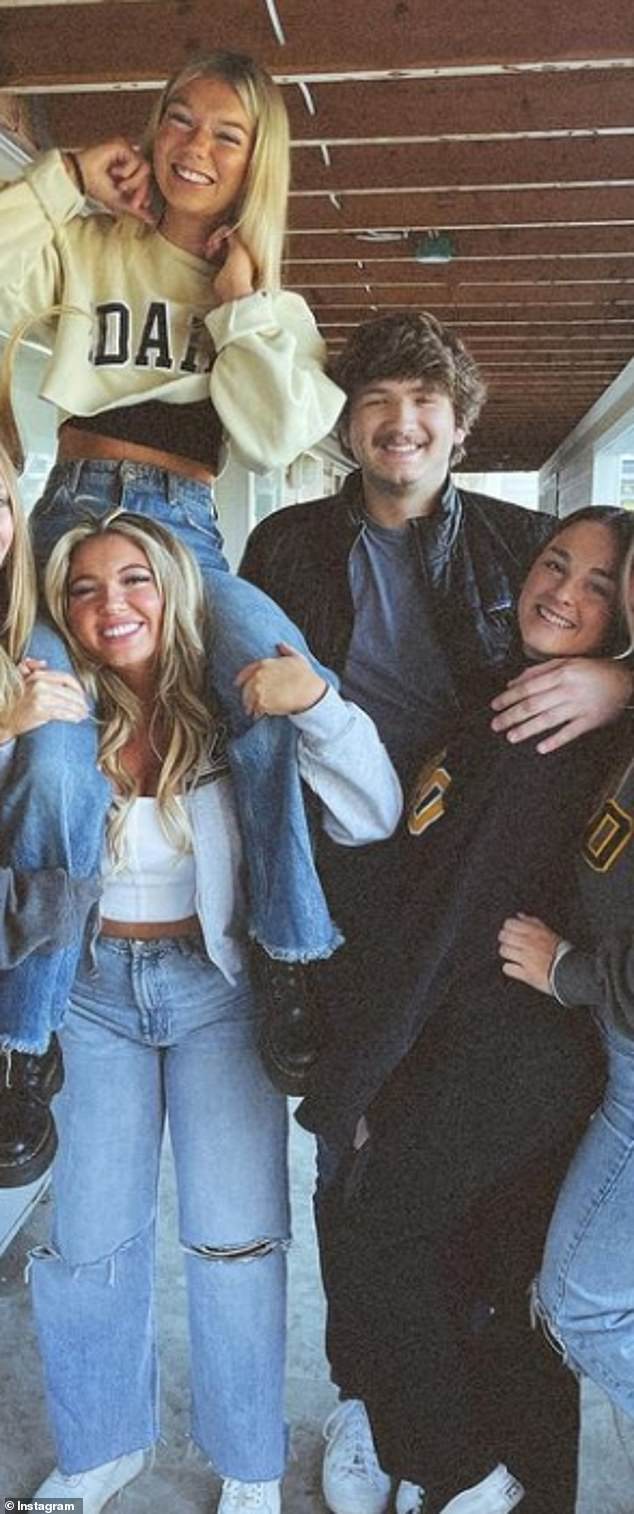
Tragic victims (clockwise from top) Maddie Mogen, Ethan Chapin, Xana Kernodle and Kaylee Goncalves photographed hours before their deaths

Kaylee Goncalves, pictured right, and Madison Mogen, centre, with friend Ashlin Couch, were murdered with a knife by an assailant who entered a university house in the small hours of November 13, 2022
It would be months before we learned more through court papers. Then it emerged that on that terrible night, one surviving house-mate had heard what sounded like crying coming from Xana’s room. Later she told police she opened her bedroom door and saw a man with bushy eyebrows and a mask in the corridor of the house.
She stood in ‘frozen shock’ and then locked herself in her room, where she exchanged increasingly frantic texts with a second surviving house-mate – and also messaged Kaylee and Xana, who of course failed to reply.
It took six long weeks for police to make an arrest. Bryan Kohberger, then 28, was picked up in the Poconos, the wooded mountains in Pennsylvania, a full 2,500 miles from Idaho and on the other side of America – a distance that at first made no sense and seemed only to deepen the mystery.
Then we were told he was a criminology PhD student at Washington State University (WSU), a ten-minute drive from the University of Idaho where the four young victims studied. He’d been arrested on New Year’s Eve at his parents’ house, where he was spending the holidays.
I looked at the images of Kohberger, cuffed and in his orange prison jumpsuit. Something about his gaze seemed off to me, a feeling that intensified in January, when he made his first court appearance. He was hyper-focused.
From research and personal experience (my ex-partner has a child on the spectrum), I know the signs of autism very well. I didn’t know it yet, but his lawyers would later signal their intention to use an autism diagnosis as part of his defence.
As I learned more about this man from the news coverage that spilled into 2023, there seemed something tragic about his story: he was a former heroin addict, someone who had struggled socially at school, who’d been unmemorable and overweight as a child and yet had got himself onto a PhD programme at the highly regarded WSU.
What would make a young man in his 20s who has overcome heroin addiction, and who is given the chance of a lifetime to make something of himself, become a murderer instead?
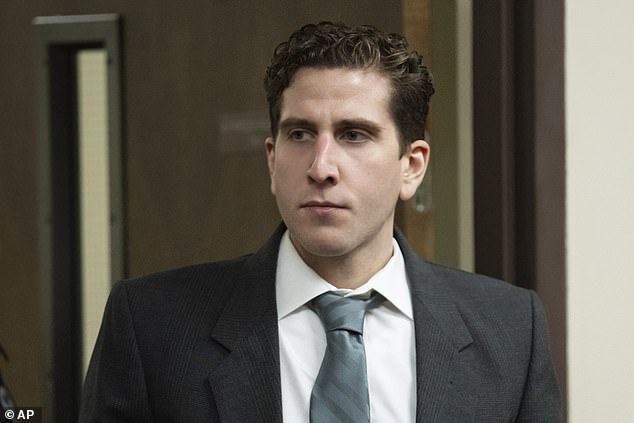
On Monday this week those of us who have been closely following this terrible case were astonished to hear that the man set to go on trial for the murders next month, pictured in 2023, has now decided to plead guilty, writes Vicky Ward
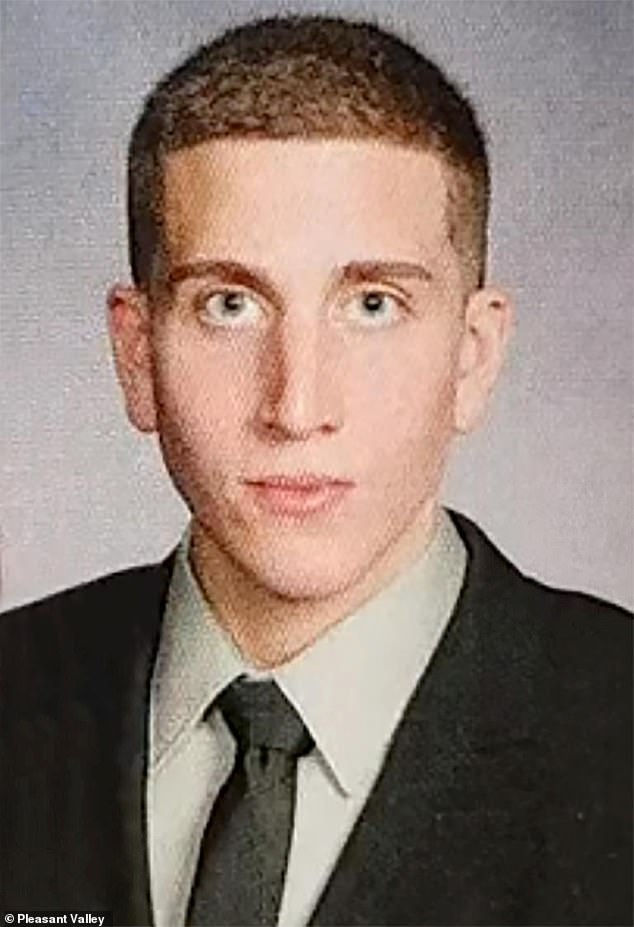
It was a totally unexpected move, following years of legal wrangling by his defence and never any indication he would do anything but insist on his innocence

As I learned more about this man, pictured in his school yearbook, from the news coverage that spilled into 2023, there seemed something tragic about his story
It was certain that Kohberger had been in the vicinity of the Idaho Four. The legal document that showed the grounds for his arrest mentioned his phone had pinged off a cell tower close to the students’ home 12 times since June 2022, indicating he’d been near the house 12 times at night or in the very early morning.
He did not seem to know them in person, yet it became clear he had been watching them online.
By early summer he’d been following social media accounts of all three female victims. The one whose photographs he ‘liked’ the most was Maddie, the girl on Kaylee’s shoulders.
All of them had public social media accounts. All of them wanted to be online influencers, the dream career for so many young women nowadays.
Over the next few months I desperately tried to understand what kind of a man would be capable of doing this. And a very dark thought, one I’m even afraid to repeat here, came into my head: what if my own sons had something within them that made them similarly capable?
One of my sons is majoring in psychology as an undergraduate, just like Kohberger did. He was also small and therefore bullied in high school, just like Kohberger was. And he felt isolated, just like Kohberger did.
To understand Kohberger’s psychology, I began to look into the kind of world young men inhabit today. Someone else was doing this, too – the thriller writer James Patterson. A mutual friend put us in touch and we decided to write a book about the case.
The product of hundreds of interviews with families and friends of the victims, the book is a love letter to the city of Moscow and to the Idaho Four. We also spoke at length to people who knew Kohberger to build up a picture of the kind of man he was before he became a murderer.
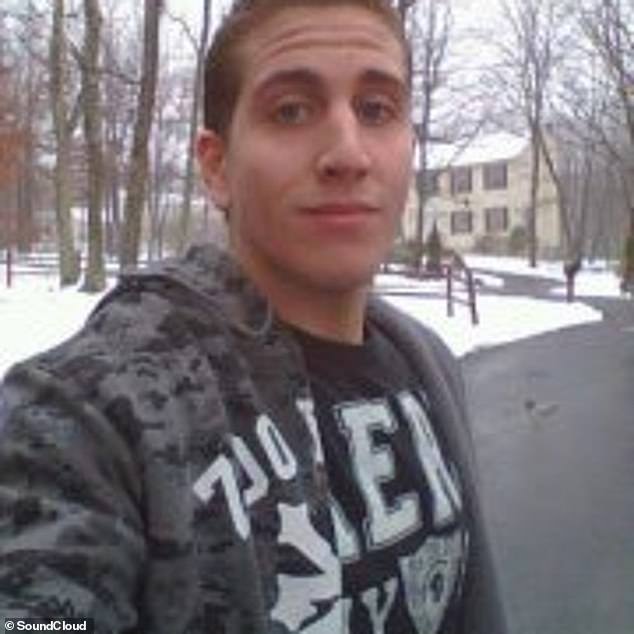
It was certain that Kohberger had been in the vicinity of the Idaho Four before their deaths
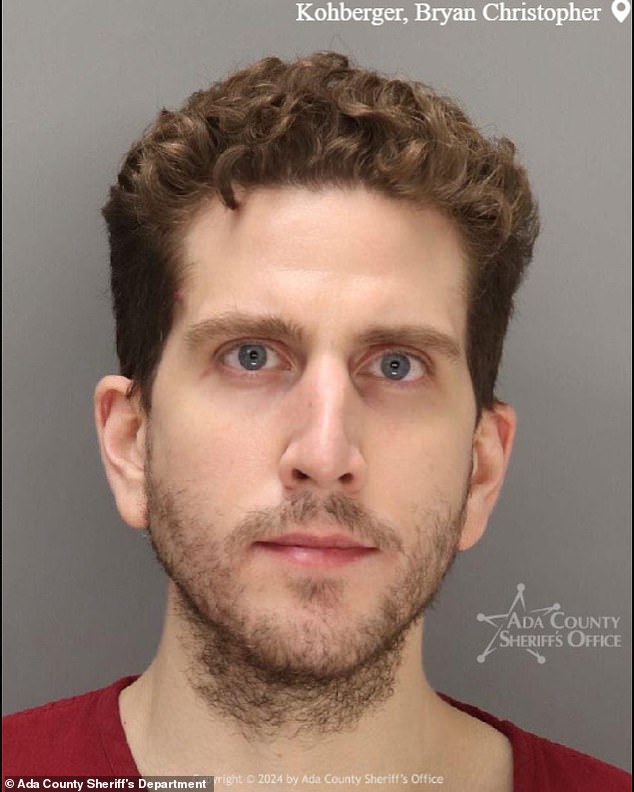
Over the last few months I desperately tried to understand what kind of a man would be capable of doing this
And yet the plea deal Kohberger’s defence team will enter into court today may mean we never find out the answer to the one big question hovering over it all: Why?
Why did he kill four students he apparently barely knew? If he never takes the stand, we may never know.
In fact, there are striking parallels between Kohberger’s behaviour and that of an infamous British-American mass murderer, Elliot Rodger, who has become a ‘hero’ of the Incel (Involuntary Celibate) movement, a misogynistic cult active online.
Kohberger wasn’t just familiar with Rodger. As part of a criminal justice course he took at De Sales University – where he took his first degree in psychology – he studied Rodger and the mass murder/suicide he committed in Isla Vista, California, in 2014.
I learned through classmates of Kohberger’s exactly what he’d been taught at De Sales University by criminologist Katherine Ramsland, America’s leading expert in serial killers.
For those who don’t know – and I didn’t – Rodger was a privileged, handsome college student, whose British father was a movie director in Los Angeles. But Elliot was a loner and struggled socially and, as he got older, was rejected by all the women he pursued.
As part of his murderous plan, he wrote a 137-page memoir and filmed a series of videos. In one, sitting in his black BMW with the sun setting behind him in the Santa Barbara hills, he announced his plans for ‘retribution’ on all the young women who’d turned him down. He then murdered six people, injured 14 and killed himself after exchanging gunshots with the police.
Since that deadly rampage over a decade ago, a violent element has emerged within the Incel movement that talks of a ‘Retribution Day’ against all the ‘Chads, Beckys and Stacys’ of the world – labels used for men and women who are conventionally attractive.
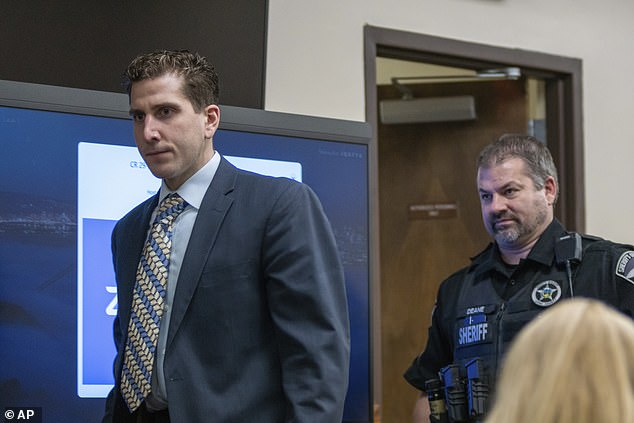
And a very dark thought, one I’m even afraid to repeat here, came into my head: what if my own sons had something within them that made them similarly capable? (pictured: Kohberger in 2023)
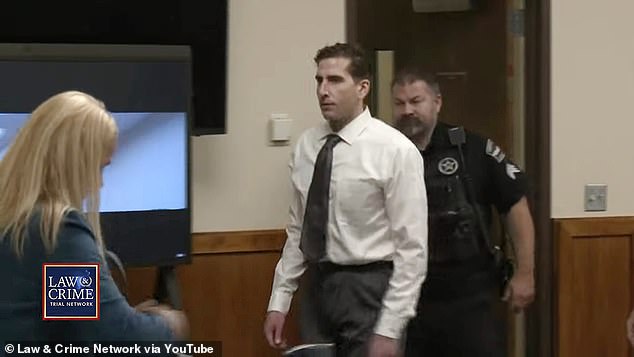
To understand Kohberger’s psychology, I began to look into the kind of world young men inhabit today
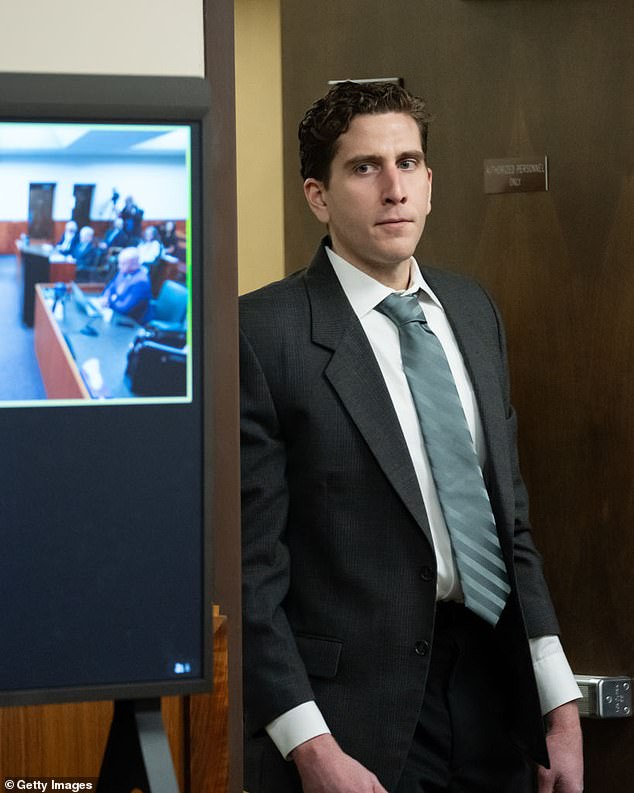
Why did he kill four students he apparently barely knew? If he never takes the stand, we may never know
Criminologist Ramsland taught her class that Rodger had a combination of telling characteristics – substance abuse, purposelessness, anxiety, feelings of being trapped, withdrawal, anger, recklessness and mood changes.
How deeply had this knowledge of Rodger’s extremist misogyny affected Kohberger? I asked my sons about Incels. I wondered if they were consuming material about Rodger. They were shocked and a bit amused I had no idea about the culture. ‘Everyone knows what an Incel is, Mum.’
They explained to me that Chads are the guys who can get the girls; Stacys are the nubile women who promote themselves on social media; and Beckys are the more earnest, average type of woman. My sons were completely blasé as they told me all this.
As the book progressed, one or other of my boys would try to be helpful and send me videos of people talking about Incels and other ‘data’ that completely freaked me out. One of them had a monologue about the way Incels talk about women.
Example: ‘I had the courage to ask out a femoid who works with me and the bitch takes one look at me says, ‘Eww’ and walks away. F***ing whore.’
I’ve got to be honest, I couldn’t watch much more than five minutes. But did my son understand any of it, or, far worse, relate to it?
‘Mum, it’s ok,’ he said, seeing the worry etched on my face. ‘I’ve got a girlfriend. I’m not like them.’
It’s true. Both my sons have girlfriends. One is less social than the other, and his relationships are therefore more intense, but the point is that he has relationships. He has friends.
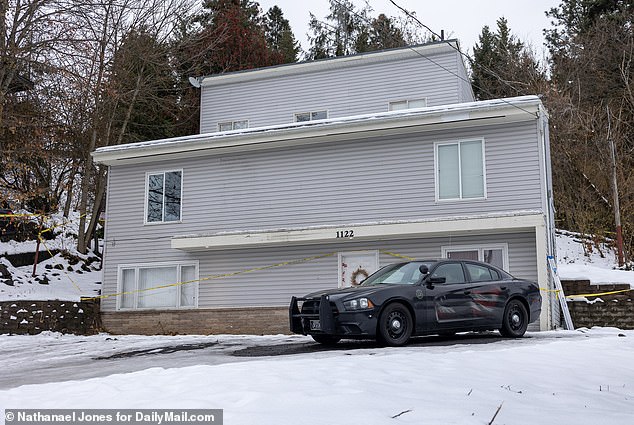
Tthe four students’ house in the town of Moscow, Idaho

The group’s friends and families believe that Maddie Mogen was Kohberger’s target
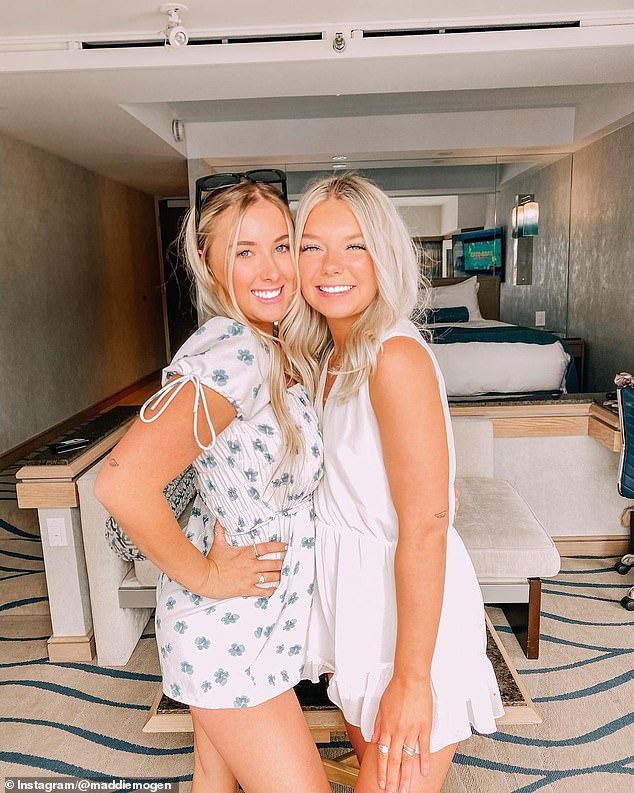
It was her room he’d have been able to directly look into from his parked car (pictured: Maddie with roommate Ashlin)
No one wanted to hang out with Kohberger. It wasn’t just his weird mannerisms, it was the way he talked to and about women that sent his classmates scurrying to avoid him.
‘I can walk into any social gathering and get any girl I want,’ he told Ben Roberts, a fellow PhD student, who accepted a lift from him and almost instantly regretted it. Roberts doubted this was true, but Kohberger wasn’t finished. He told Roberts that women belonged in the kitchen and bedroom. Not in the classroom. Roberts intuited that this was why Kohberger behaved so offensively towards the women in class, mansplaining and interrupting one of the women, who had then walked out.
Just a couple of weeks before the murders, Roberts noted Kohberger’s appearance had taken a turn for the worse. Kohberger was supposed to be teaching postgraduates, but there were whispers he was imploding professionally, that all the negative remarks he’d made about women, and his eye-rolls in class, had resulted in clashes with the administration and he was likely to lose his teaching position, without which he couldn’t afford to carry on attending the university.
Roberts was so worried by Kohberger’s gaunt appearance, he started to type out a form which would be emailed to the college team in charge of the students’ mental and physical well-being. But Roberts deleted the form. Something about Kohberger made him nervous. The form is intended to be anonymous but — as Roberts explained when we spoke – if Kohberger ever discovered it was Roberts who submitted it, Roberts had felt there might be trouble.
And then the murders happened on November 13. Roberts still wonders what might have happened if he’d sent in that form.
My view of the world has changed since immersing myself in the online hatred expressed by Incels in order to write the book. I started work on it before I heard of or watched the ground breaking British TV show Adolescence, about a teenage boy who murders a teenage girl having absorbed misogynistic content online.
I was one of those parents who thought that, if my boy-men were in their bedrooms, tapping away on their phones or laptops, they were safe.
Obviously, many of us now know better. But I don’t know if we’ve really thought about the dangers of social isolation – especially for boys and young men. The misfit kid, the one who is bullied, who might be on the spectrum; the one who has ADHD; the one who hasn’t got any friends, who sits at home on his phone.
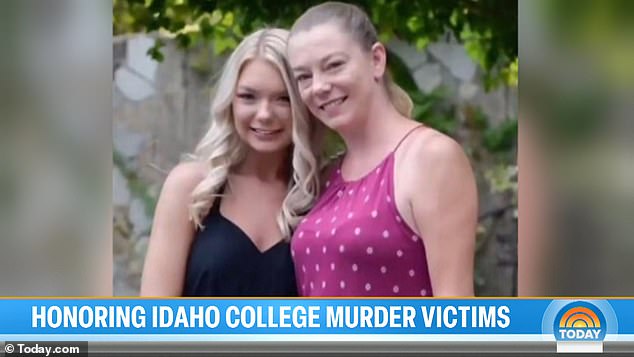
The one whose photographs he ‘liked’ the most was Maddie, pictured with her mother Karen Laramie

Bethany Funke, pictured left, was a former roommate of those killed
How many young men are like that? Too many.
An important message from the book is that we need to build in more systemic support for those boys. Because if we don’t, there’s a whole community online waiting to fuel their rage and warp their views of women.
And the result could be horrendous and unspeakable.
Of course, none of this excuses in any way the horror visited on the Idaho Four. The responsibility for that lies solely with Kohberger. We don’t know for sure that any of it has any bearing on the murders. Unless Kohberger tells us, we never will.
But no one would be the slightest bit surprised if it did. The group’s friends and families believe that Maddie Mogen was Kohberger’s target.
It was her room he’d have been able to directly look into from his parked car. And it was her room he went straight up to on November 13. Kaylee Goncalves was only with her by chance.
When my sons heard the news about Kohberger’s guilty plea this week, they phoned me to get my reaction. One has just graduated and is now working in Washington, DC. The other has one more year to go studying and has been doing summer courses. He’s hanging out with his girlfriend and thinks I don’t like her. He doesn’t know how wrong he is!
Given everything I now know about the dark, dehumanising world of Incels, when I saw her car outside the apartment the other night, as she was waiting to pick him up, I sighed with relief.
The Idaho Murders: Uncovering The Tragedy That Shocked The World by James Patterson and Vicky Ward (£20, Cornerstone) is out on July 31.











